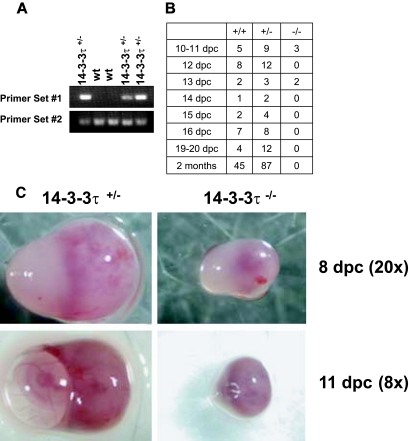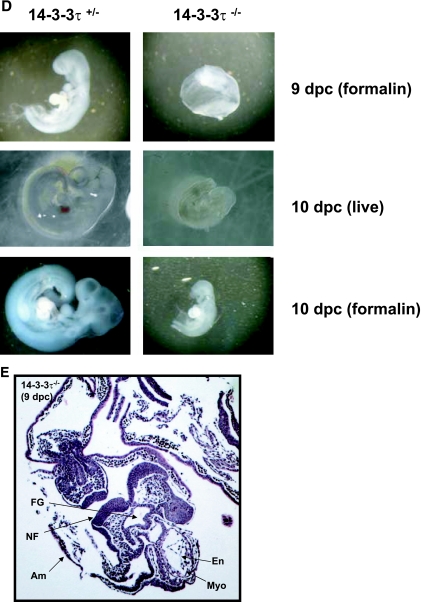FIG.1.
14-3-3τ−/− animals do not survive embryonic development. A. Male and female 14-3-3τ+/− animals were mated, and embryonic offspring were analyzed for genotype by PCR at specific time points after fertilization. B. 14-3-3τ−/− embryos die by embryonic day 14. Genetic analysis of embryos obtained from 14-3-3τ+/− × 14-3-3τ+/− matings at various embryonic stages. C. Deciduae containing 14-3-3τ−/− embryos are smaller than heterozygous deciduae. Deciduae from 14-3-3τ+/− × 14-3-3τ+/− matings were isolated from adult females at 8 and 11 dpc. In several cases at 11 or 12 dpc, deciduae containing 14-3-3τ−/− embryos were partially resorbed or were dead (see bottom right panel). D. 14-3-3τ−/− embryos are hypomorphic and exhibit developmental delay at 9 and 10 dpc. Embryos were carefully dissected from deciduae and were photographed under a dissecting microscope. Embryos were placed in formalin and were again imaged. E. Cardiac development is delayed but is otherwise normal in 14-3-3τ−/− embryos. Formalin-fixed embryos were embedded in paraffin, sectioned with a microtome, and stained with hematoxylin and eosin. A transverse section of a paraffin-embedded 9-dpc 14-3-3τ−/− embryo is depicted in the figure. Am, amnion; En, endocardium; FG, foregut diverticulum; Myo, myocardial layer of ventricle; NF, neural folds.


